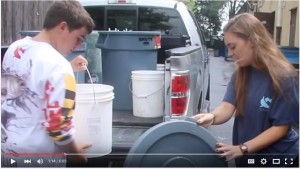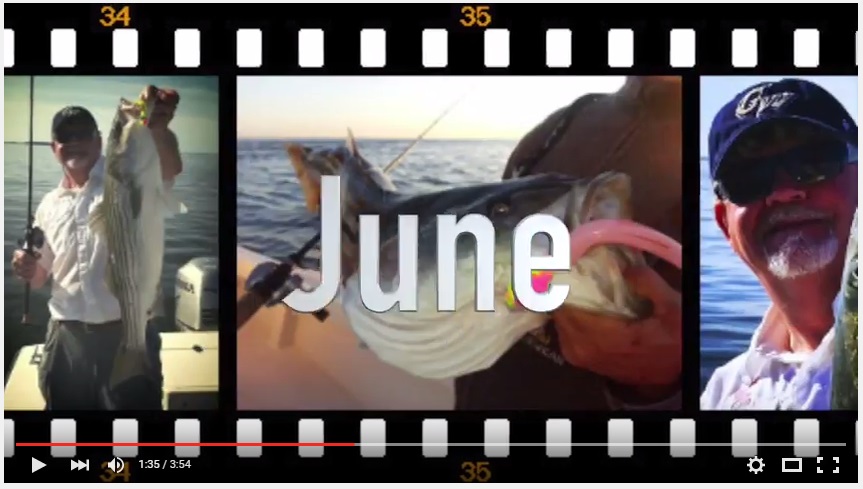oysters
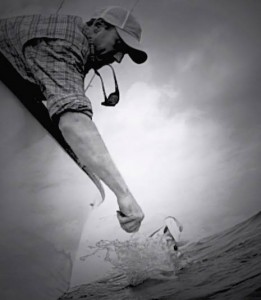 In January of last year I predicted on the HookedUp Fishing Forum that 2015 would be the best year for light tackle fishing in recent memory.
In January of last year I predicted on the HookedUp Fishing Forum that 2015 would be the best year for light tackle fishing in recent memory.
It was.
Thanks to the robust 2011 year class, there was enough striped bass in the Chesapeake Bay to produce great fishing for light tackle anglers of any skill level. Better yet, most of us caught fish way bigger than those 17-21 inch 2011 fish. That’s because when there are more fish in the Bay, the older and bigger fish have to mix it up with the little guys to compete for food. Thirty-inch stripers in July near the Chesapeake Bay Bridge were not unusual last year, and late-fall fishing in Southern Maryland was (and still is) the best it’s been in over a decade. That’s something to celebrate. Since 2015 was also a successful spawning year, we can hope for continued good striped bass fishing in the future. I’m especially looking forward to 2018. By that time, most of this year’s baby fish will be 18-inches or longer. At the same time, the 2011 fish will be approaching the 30-inch mark. Now that should be fun! If fisheries managers make the right choices, we should enjoy good striped bass fishing in the Chesapeake Bay for at least the next decade.
About seven years ago, as I was enjoying a happy hour at the Boatyard Bar & Grill, someone asked me what motivated me to promote light tackle fishing. It seems like a losing proposition, they surmised, because the more people you turn on to your kind of fishing, the more crowded your fishing spots will become. That prophecy has been fulfilled, but I have no regrets. My answer is the same now as it was then. I believe that, as more people take up light tackle casting, more anglers will become conservationists and join the struggle to protect and preserve the fish we love to catch. That means more fish for everyone. Light tackle casting by its very nature puts the experience of fishing above killing fish for meat. Oh, most of us will keep fish from time to time, but we don’t have to in order to have a great time. We understand that every fish we release is a payment forward toward the future of fishing.
If you enjoyed the fishing of 2015, this would be a great time for a New Year’s resolution. A very good one would be to give something back to the fish in order to repay a little of that enjoyment. If you’ve read my books, you know I believe that the majority of light tackle anglers are conservationists at heart and that we are naturally positioned to lead because others want to share our fishing success. I was tremendously encouraged in 2015 when I saw lots more young light-tackle anglers joining fisheries conservation efforts. A great example is CCA Central Region’s Living Reef Action Campaign. If you haven’t seen it already, take a few minutes to watch this video about the work of Brett Hackett, Summer Miles, and the rest of the Central Region gang.
There’s a lot of work to do. Habitat for fish, crabs, and other aquatic species in the Chesapeake Bay is under attack. Just as I am writing I am hearing that the Department of Natural Resources intends to begin destructive dredging on the historic Man-O-War Shoals oyster reef in the upper bay. At the same time, they’re suspending oyster restoration efforts near the Little Choptank river. There’s even a movement afoot to open the oyster sanctuaries to harvest. The intentional destruction of a living reef is illegal in almost every other part of the world. There are even places where you can be fined for dropping an anchor on a live reef. It’s a shame that the very department we trust to protect Maryland’s natural resources is so willing to put the financial interests of one group above those of everyone else in the state.
So get involved if you can. Groups like CCA Maryland need your help. Giving back can be as simple as setting a personal example or by sending a letter or email to a local politician in hopes of swaying their votes on key issues. If you’ve received a little enjoyment from this beautiful Chesapeake region, then please give back a little of your time and resources. If you’ve received a lot, then I hope you’ll give back as much as you can to make sure the enjoyment you’ve received is passed along to your children and grandchildren. We simply cannot take the amazing resources in our beautiful region for granted. Yes, 2015 was a great year for light tackle fishing and hopefully there will be many more to come. Watching out for the continued well-being of the fish and the habitat they live in is the right stuff for keeping the Chesapeake healthy and our sport strong. Happy new year from Chesapeake Light Tackle!
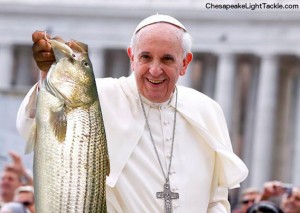 The Pope doesn’t call me very often, so when he does, I usually pick up. “Whas’ up, Kimbro?” Thank God he wasn’t speaking Latin this time. “You know I’m gonna be in DC next week, so we’re fishing, right?”
The Pope doesn’t call me very often, so when he does, I usually pick up. “Whas’ up, Kimbro?” Thank God he wasn’t speaking Latin this time. “You know I’m gonna be in DC next week, so we’re fishing, right?”
“Yeah, everything’s slow at work what with all the festivities.” I replied. “How about we meet Wednesday morning at Kent Narrows.”
I looked at the wind forecast, and things didn’t look good, but fortunately there wasn’t a breeze stirring when I woke up. I’ve had some problems with the lights on my boat trailer, but somehow they were working fine as I pulled out of my driveway and headed down Route 50. I’d overslept a little and I don’t like being late, so I decided not to stop for gas. When I got to the ramp, the gas gauge was pegged way past full. Read More!
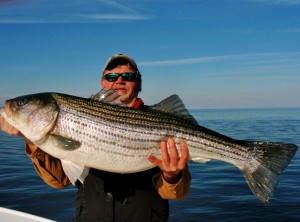 I may have found the best fishing spot in the Chesapeake Bay. I discovered it completely by accident a few years ago. I was zig-zagging across some ledges in the Mid-Bay when I saw something on my fish finder that looked like a miniature underwater forest. My first thought was that I was seeing small tree trunks or the remains of fence posts coming up from the bottom. Then I thought maybe I was seeing a shipwreck, but the more I explored the area, the more it became apparent that my sonar was pinging over more natural structure. I was seeing the sonar returns of oysters, and lots of them.
I may have found the best fishing spot in the Chesapeake Bay. I discovered it completely by accident a few years ago. I was zig-zagging across some ledges in the Mid-Bay when I saw something on my fish finder that looked like a miniature underwater forest. My first thought was that I was seeing small tree trunks or the remains of fence posts coming up from the bottom. Then I thought maybe I was seeing a shipwreck, but the more I explored the area, the more it became apparent that my sonar was pinging over more natural structure. I was seeing the sonar returns of oysters, and lots of them.
When oysters are left to grow, they form highly complex and irregular reefs. This is a result of the natural reproduction process by which larvae is set onto existing shells. These new shells clump together with older ones, and grow upward toward the surface. When the reefs go unharvested, they grow into mounds or plumes. When they’re left alone for a long time, the mounds can reach the surface of the water and be visible at low tides. In regions where oysters are plentiful, they call these mounds “oyster rocks.” That’s a term you don’t hear too much in Maryland because there aren’t any oyster rocks left. Read More!
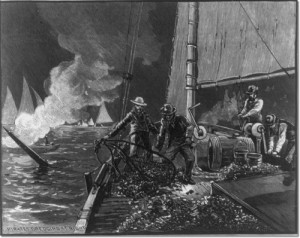 This is just a short response to an article in the Sunday edition of the Annapolis Capital. I’ll preface by saying that I consider the writer, Captain Chris Dollar, a friend. I also know him to be an excellent fisherman. I was just speaking to a fishing buddy yesterday about how excited I am that he has opened a new kayak and biking store near Kent Narrows. A genuine nice guy, I wish him the best in everything he does and I encourage everyone to stop by his new store. The following is my letter to the editor of the Annapolis Capital in response to his disagreement with my recent ChesapeakeLightTackle.com entry about wild-caught Chesapeake oysters. That entry has now received over 15,000 individual page views:
This is just a short response to an article in the Sunday edition of the Annapolis Capital. I’ll preface by saying that I consider the writer, Captain Chris Dollar, a friend. I also know him to be an excellent fisherman. I was just speaking to a fishing buddy yesterday about how excited I am that he has opened a new kayak and biking store near Kent Narrows. A genuine nice guy, I wish him the best in everything he does and I encourage everyone to stop by his new store. The following is my letter to the editor of the Annapolis Capital in response to his disagreement with my recent ChesapeakeLightTackle.com entry about wild-caught Chesapeake oysters. That entry has now received over 15,000 individual page views:
In his Outdoors column of March 4, 2012 Captain Chris Dollar writes in the Annapolis Capital:
(As a sidebar, I read a recent blog post in which the writer claimed people shouldn’t eat wild Chesapeake oysters because it’s bad for the bay. In all my conversations with experts over the years I’ve never heard that as a cause of what ails bay oysters.) Moreover, banning the catch of wild fish or oysters seems at odds with the state’s efforts to promote Maryland seafood. Catch local, eat local, right?
Dear Editor — Since Captain Dollar is speaking of my comments in my blog, Chesapeakelighttackle.com entry Jan 25, “Oysterholism,” I think it is only fair to point out that I am a big advocate for farm-raised Chesapeake oysters. I consider them to be among the best in the world, and encourage everyone to eat them. However, I believe Captain Dollar may be conversing with the wrong experts because,according to research published by the University of Maryland in 2011 in the journal Marine Ecology Progress Series (Vol. 436), “the oyster population in the upper Chesapeake Bay has been estimated to be 0.3% of population levels of early 1800s due to overfishing, disease, and habitat loss.” If discouraging the eating of the last 0.3% of wild-caught oysters is at odds with the state’s efforts to promote Maryland seafood, I suggest the state take another look at it’s policies. I don’t know about my good friend Captain Dollar, but I don’t want to be the one who eats the last wild-caught oyster from the Chesapeake Bay.
Respectfully, Shawn Kimbro Read More!
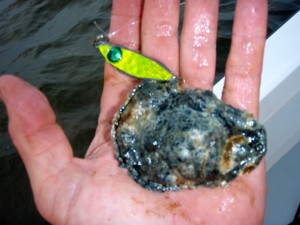 It’s not that hard, right? You just open your mouth, close your eyes, and throw it back. At least that’s how a lot of people eat oysters. I wonder if they really like them, or just the idea of eating them? I consider myself something of an oysterholic. There’s only so long I can go without eating some. I like them just about every way you can prepare them, but especially raw. I have several friends who are also oysterholics. Since our problem is more than we can handle, we’ve developed a twelve-step-program. Thank goodness they sell oysters by the dozen!
It’s not that hard, right? You just open your mouth, close your eyes, and throw it back. At least that’s how a lot of people eat oysters. I wonder if they really like them, or just the idea of eating them? I consider myself something of an oysterholic. There’s only so long I can go without eating some. I like them just about every way you can prepare them, but especially raw. I have several friends who are also oysterholics. Since our problem is more than we can handle, we’ve developed a twelve-step-program. Thank goodness they sell oysters by the dozen!
I remember the first oyster I ever tried. It was spring break of my freshman year in college. I visited a friend who lived on a boat along the Florida coast. We were broke and hungry so he showed me how to wade out and catch oysters from the Apalachicola Bay. We shucked them with a screwdriver and ate them on the spot. They were delicious. I’ve since refined my techniques for finding and eating oysters, but I’ll never forget the first time. Read More!



